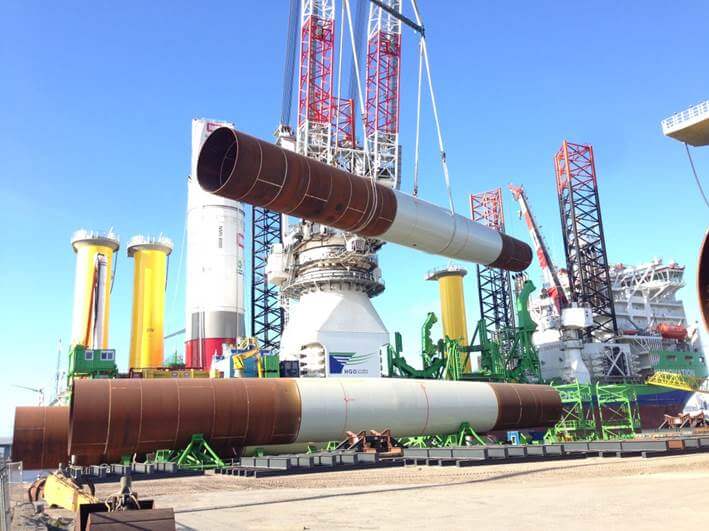
Gode Wind Offshore Wind Farm
Location: North Sea
Dates: 2013
The Gode Wind offshore wind farm (OWF) comprises of 97 wind turbine generators (WTG) located in the German part of the North Sea. Each WTG is supported by a 7.5 m diameter monopile foundation. The ground conditions in this area feature relatively homogeneous dense to extremely dense sands overlain by looser post-glacial sediments. At the time, monopiles in sand were commonly designed using the API p-y formulation. This method is based on empirical load-displacement data obtained from full-scale load testing conducted in the 1970s. However, the dimensions of monopiles significantly differ from the dimension of piles used in those historic tests. Consequently, the application of the API p-y formulation would have been stretched beyond its verified range. It is worth noting that DNV-GL guidelines and standards have been amended to specifically suggest that proposed design methods should be validated by other means, e.g. finite element (FE) analysis.
The Gode Wind OWF monopiles were designed using modified API p-y curves. As part of the design process, GCG were commissioned to undertake 3D FE analyses to predict the behaviour of monopiles at selected locations across the OWF to benchmark and validate the geotechnical design under serviceability and ultimate limit state conditions. The FE analyses incorporated advanced soil models to accurately represent the small strain stiffness properties of the sands, adopting reasonably conservative parameters. For both limit states, a much stiffer lateral load-displacement response was predicted by the FE analyses as compared to the modified p-y curves. It is worth noting that this is in line with implications from field measurements of WTG frequency responses. In the case of the serviceability limit state loading, the lateral displacement predicted by the FE analysis was around half of that obtained with the modified p-y curves. Similar conclusions were reached with respect to the moment-rotation behaviour. Although verified to be safe, the FE analysis results showed that conventional p-y based monopile design methods exhibit large margins of conservatism for modern monopile dimensions therefore identifying significant potential to economise the cost of OWFs at the design stage.
References
Schroeder, F. C., Merritt, A. S., Andersen, K. W., Muir Wood, A., Thilsted, C. L. & Potts, D. M. (2015) Predicting monopile behaviour for the Gode Wind offshore wind farm. Proc. Int. Symp. Frontiers in Offshore Geotechnics – ISFOG 2015, Oslo (Ed. V. Meyer)